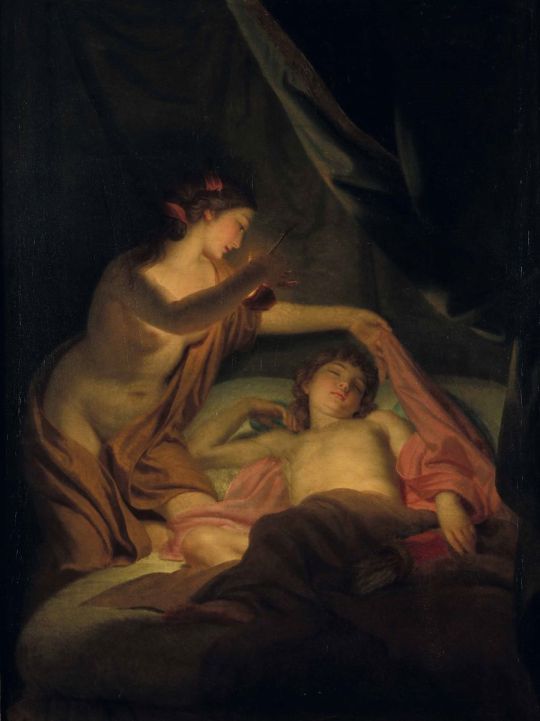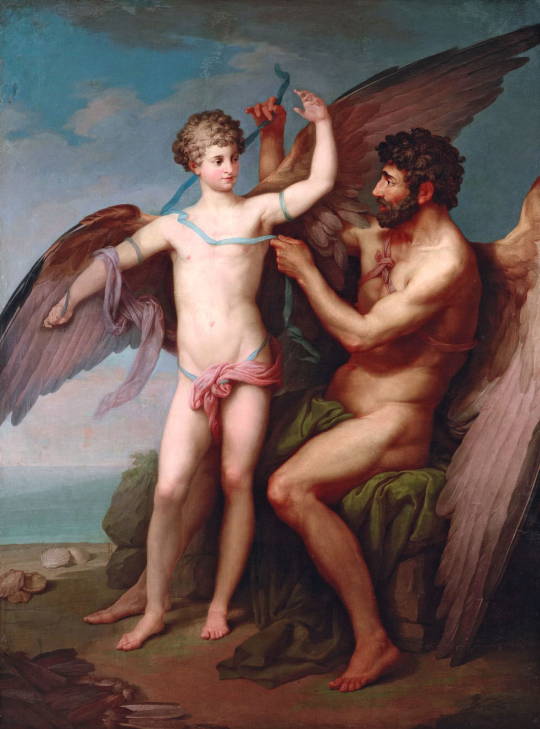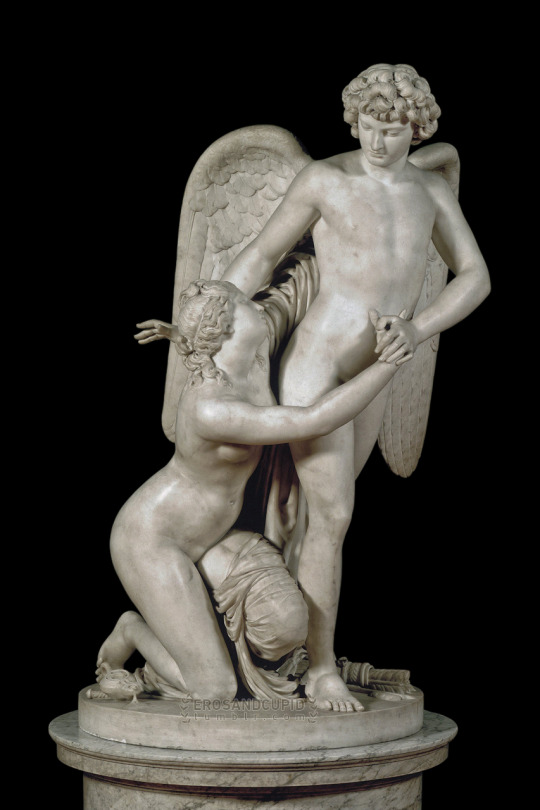#saec. XVIII
Explore tagged Tumblr posts
Text

1782, Bénigne Gagneraux, The abduction of Ganymede
#Bénigne Gagneraux#The abduction of Ganymede#saec. XVIII#1782#pictura#Muzeum Narodowe w Warszawie#Varsoviae#Ganymedes#Iupiter#Zeus
10 notes
·
View notes
Text
Greek Cities in Colchis. Point of View
Tedo Dundua, Natia Phiphia
The paper deals with the principal aspect of Graeco-Colchian relations, i.e. colonization, using narrative, archaeology and numismatics. Empiric level of the issue is as follows: Pomponius Mela narrates that city of Phasis in Colchis at the East Black (Pontic) Sea Coast (modern Photi, West Georgia) was founded by Themistagoras the Milesian (Pomp. Mela. I. 108) (Caucasus Antiquus. Encyclios Disciplina. Volumen I. Fontes. Logos. MMX, p. 487). The note dates back to the end of the 6th c. B.C. According to Arrianus, Dioscurias (modern Sokhumi, West Georgia) also was founded by the Milesians (Arr. Peripl. 12) (Caucasus Antiquus. Encyclios Disciplina. Volumen I, p. 305). The note dates back again to the end of the 6th c. B.C. Ps.-Scylax writes about Hellenic cities in Colchis. They are as follows – Phasis and Gyenos (modern Ochamchire, West Georgia) (Ps.-Scylax. Asia. 81) (Caucasus Antiquus. Encyclios Disciplina. Volumen I, p. 154). This note dates back already to the midst of the 4th c. B.C. We do not have Aristotle’s (?) full account of Phasian constitution (Ps.-Heracl. Polit. XVIII.) (Caucasus Antiquus. Encyclios Disciplina. Volumen I, p. 197). And Strabo describes Dioscurias and Phasis as trading places of the Colchians (Strabo. XI. 2. 16, 17) (Caucasus Antiquus. Encyclios Disciplina. Volumen I, pp. 222-223). Pliny mentions pillaged Pitius (Bichvinta, Western Georgia), and also, castellum Sebastopolis instead of city of Dioscurias/Sebastopolis (Plin. NH. VI. 14-16) (Caucasus Antiquus. Encyclios Disciplina. Volumen I, p. 500). Arrian in 131 saw no Greeks in Phasis and Sebastopolis (Arr. Peripl. 11-12) (Caucasus Antiquus. Encyclios Disciplina. Volumen I, pp. 304-305). What happened to them? According to Ephorus (via Aristotle), they ran away from there to Miletus (Arist. Fr. 557) (T. Kaukhchishvili. Greek Authors about Georgia. vol. II (Aristotle, Nicolaus of Damascus, Claudius Aelianus). Tbilisi. 1969, p. 73). Why did the Greeks leave Colchis? Hippocrates narrates about bad climate and dangerous humidity in Colchis, and also, yellow coloring of the skin of fat and lazy Phasians (Hippocr. 15) (Caucasus Antiquus. Encyclios Disciplina. Volumen I, pp. 108-109; T. Kaukhchishvili. Hippocrates about Georgia. Tbilisi. 1965, pp. 45, 47).
This schematic story needs to be filled up, using numismatics.
Apollo was main deity of Phasis, according to records and numismatics. Lion, symbol of Apollo, is depicted on the local coins.
Obverse: Lying hermaphrodite lion to the right/left with a head turned back.
Reverse: Kneeling female figure with a bull’s head to the right/left in quadratum incusum.
http://geonumismatics.tsu.ge/en/catalogue/types/?type=4
This is Colchian (Phasian) didrachm, struck in the 5th c. B.C. Lion is depicted also on other denominations. Hermaphroditization is a result of Apollo’s merge with the local female sun.
When city has Apollo as main deity, it is oligarchic. Phasis was oligarchic republic.
In the 5th-3rd cc. B.C. Phasis issued the hemidrachms below:
Obverse: Archaic female head to right/left within the linear circle or in border of the dots.
Reverse: Bull’s head to right within the linear circle. Some of the coins are with the Greek letters – ΜΟ/ΣΟ, Φ, Α, Ο, Ε, Π, Δ.
http://geonumismatics.tsu.ge/en/catalogue/types/?type=13
Athens, a fashion maker, still preserved archaic style on the coins until the 2nd c. B.C., thus demonstrating its democratic conservatism. Archaic style on Colchian (Phasian) money, does it mean the same, i.e. fidelity to republican constitution until the 3rd c. B.C.?
When city has symbols of Dionysus on the coins, it could be democratic, even formally.
Municipal copper coins of Dioscurias (105-90 B.C.).
Obverse: Caps of Dioscuri, surmounted by six, or eight-pointed stars.
Reverse: Thyrsos of Dionysus in the center of the coin, the Greek three-line legend on both sides ΔΙΟΣ/ΚΟΥΡΙΑ/ΔΟΣ.
http://geonumismatics.tsu.ge/en/catalogue/types/?type=22
Dioscurians, subjugated to Mithridates VI, king of Pontus, preserved their municipal structures and struck their own copper money. Also, it seems that Mithridates’ garrison was located in Dioscurias and official appointed by him controlled the mint.
For the republics in Classical Antiquity there were the gods to justify a legitimacy of a coin. With the decay towards autocracy the first persons started to be portrayed.
Julius Caesar became the first living individual to be portrayed in Rome, and it was done by special senatorial decree (Chr. Howgego. Ancient History from Coins. London and New York. 1995, pp. 67-69).
Was he really the first Roman to be honored this way?
What is about Gnaeus Pompejus, that is exactly him on obverse of the light drachm struck in Phasis in 52/51 B.C.
Obverse: Head of Gnaeus Pompejus in solar diadem right.
Reverse: Tyche seated, Greek inscription
– ΑΡΙΣΤΑΡΧΟΥ ΤΟΥ ΕΠΙ ΚΟΛΧΙΔΟΣ/BΙ
of Aristarchus, the viceroy of Colchis”,
regnal years 12 (52/51 B.C.).
http://geonumismatics.tsu.ge/en/catalogue/types/?type=18
Pompejus is shown as rex et deus, king and god (T. Dundua. Money in Georgia. Appendix. Tbilisi. 2020, pp. 77-80, 99-101).
https://www.researchgate.net/publication/344202635_Money_in_Georgia_Appendix).
Now we can fix general story for the Greeks living in Colchis. In the 7th-6th cc. B.C. the Ionian city of Miletus possessed exceptional wealth and commercial enterprise. Miletus, the greatest trading city, organized the first Greek settlements in Colchis, daughters of the Ionian metropolis – Phasis, Dioscurias etc. Themistagoras from Miletus is believed to be chargé d’affaires. In the 6th-4th cc. B.C. the Greeks established all their poleis at the East Black Sea Coast. The Greeks served their major purpose during the activity in Colchis having in mind subsequent full economic integration of the region with Hellas and highly Hellenized Anatolia. They were supposed to improve local industrial output. This ended up in failure because of super humidity of the country. In many lowland places there were terrible marshes, and the Greeks had no special idea how to drain those marshlands. There was no chance for maintaining Hellenic industrial structures as agriculture was too slow in development. Hellenism in Colchis failed with the Hellenic communities first becoming bilingual, then completely assimilated within the local society.
Still, the Greeks exported different materials, like timber, linen, metals. They imported industrial goods, mostly ceramics, which was imitated by the Colchians. Phasis and Dioscurias were splendid Greek cities dominated by the mercantile oligarchies. Gradually they became more democratic. To promote trade, Phasis issued its own silver money with Graeco-Colchian types. Trade of the peoples across the Black Sea thrived. Armament industry and ceramic production flourished in Pontus, mining in Colchis and agriculture in Bosphorus. The whole Black Sea area might be looked upon as a multicultural region of which the economic systems were ultimately based on the principle of Hellenism. The age-old maritime route from Sinope towards Phasis was easily covered in three days. From the 3rd c. B.C. Greeks flooded Colchis also for the transit purposes.
The Colchians used to write in Greek and build the temples in Greek style, but these did not prevent local kings and sceptuchoi (dukes) in the 3rd c. B.C. from conquering the Hellenic poleis.
Then economic crisis followed. In 105-66 B.C. Colchis was a part of kingdom of Pontus and there could be illusion of short economic revival. End of the 1st c. B.C. was total political chaos for Western Georgia and urban life declined, the Greeks losing their identity. Experiment aiming for inclusion of this land into the Greek economic system failed. And for the Romans Colchis/Lazica was just Pontic limes to be defended in a manner of forward defence (T. Dundua. Colchis in the 6th-4th cc. B.C. The Greek Settlements in Western Georgia. Tbilisi. 2009; T. Dundua. Georgia within the European Integration. Tbilisi. 2016, pp. 24-33, 48-51, 81-88; T. Dundua. History of Georgia. Tbilisi. 2017, pp.8-10, 121-126).
Global story is as follows. Climate determines economics. Hot and less humid environment defines an early advantage of the South over the North – indeed, the Egyptian state and the crafts confront entirely the primitive clan-system which existed in fact everywhere. Then the whole situation was changed.
Times after, some technical improvements towards the North created a very comfortable vegetation process, while the Egyptians still needed time to put the seed beyond the reach of the sun. In the 9th-8th cc. B.C. the Greeks are already vanguard by means of the technics and the structures. The countries being superb before, like Egypt and Babylon, or India, now face a new hegemonic power – Hellas, already overpopulated and needing grain and the raw materials to be imported. Then the perception of Europe has appeared. Europe is a special term for the part of the earth, which stipulates or will stipulate the same vanguard level of development. Even Scythia with its rough spring was thought to be reorganized in the Greek manner, than those countries which needed the additional finances for irrigation. So, the making of Europe started (The author is largely indebted by the general works about European integration. Some of them are cited here: Prosopographia Imperii Romani Saec. I. II. III. Pars VI. Consilio et Avctoritate Academiae Scientiarum Berolinensis et Brandenburgensis. Iteratis Curvis Ediderunt L. Petersen, K. Wachtel. Adivvantibus M. Heil, K. P. Johne, L. Vidman. Berolini. Novi Eborau. MCMXCVIII; A. N. Sherwin-White. The Roman Citizenship. Oxford. At the Claredon Press. 1939. Second edition. Oxford. 1973; D. Braund. Rome and the Friendly King. The Character of the Client Kingship. Beckenham, Kent. Fyshwick, Australia. 1984; F. Braudel. A History of Civilization. Printed in the USA. 1995; K. Rozen. Die Geburt Europas. Das Mittelmeer – die Wiege der Europäischen Kultur. Bonn. 1998, pp. 10-25; K. Held. Die Entdeckung der Welt bei den Griechen als Ursprung Europas. Das Mittelmeer…, pp. 26-45; H. Galsterer. Einheit und Vielfalt im Römischen Reich. Das Mittelmeer…., pp. 115-129; G. Alföldy. Das Imperium Romanum – ein Vorbild für das vereinte Europa? Basel. 1999; K. M. Girardet. Bundesstaaten im Antiken Griechenland und das Romische Imperium als “supranationale” Ordnung – Modelle für ein vereintes Europa von Morgen? Europa. Traditionen-Werte-Perspektiven. Beiträge zu einer Ringvorlesung der Philosophischen Fakultät der Universität des Saarlandes in Sommersemester 1999. St. Ingbert. 2000, pp. 13-48; B. und H. Galsterer. Romanisation und einheimische Traditionen. Xantener Berichte. B. 2. Köln. 1992. Kolloquium in Xanten. 2-4 Mai. 1990, pp. 377-387; S. Runciman. The Fall of Constantinople 1453. Cambridge. University Press. 1996; J. J. Norwich. A Short History of Byzantium. Published in Penguin Books. 1998).
The Greek pattern was as follows: 1. occupying or even frequently being invited to the key-points of other economic structures like Caria, Thrace, Bosphorus or Colchis; 2. establishing the autonomous Greek social structures granted heavily with the technics from metropolis; 3. the natives being equipped with the best tools for agriculture; 4. the Greek industrial structures maintained on this background; 5. exporting supplies to Hellas and receiving back some industrial goods. The Aegean and the Pontic (the Black Sea) areas were supposed to form once unique economic space. Anatolia was a complete victory of Hellenism, even being integrated politically under Mithridates Eupator, king of Pontus, as far back as in the 1st c. B.C. The Roman overlordship gave a new sense to the economic prosperity of the Greek World. But there were the serious failures too. Colchis (Western Georgia) offered a dangerous humidity to the Greek way of life. The Greeks living there had no chance to keep their industrial spirit as the agriculture was very slow in a development. Soon the Greek community became a bilingual one, and after – totally assimilated within the Colchian society. As to Bosphorus (at the Northern Black Sea coast), a corn-supply from Asia Minor to Greece had broken the traditional scheme, and the region soon lost its Greek style (T. Dundua. The Making of Europe (Towards History of Globalization). The Caucasus and Globalization. Journal of Social, Political and Economic Studies. v. 2. Issue 2. Sweden. 2008, pp. 38-45; Т. Дундуа. Как создается Европа (к истории глобализации). Кавказ и глобализация. Журнал социально-политических и экономических и��следований. т. 2. вып. 2. Швеция. 2008, pp. 44-52; T. Dundua. Georgia within the European Integration. Tbilisi. 2016, pp. 7-23; T. Dundua. History of Georgia. Tbilisi. 2017, pp. 39-55).
With no Greek residents any more, Colchis/Lazica still remained a vigorous recipient of the Greek styles.
0 notes
Text

1780, Augustin Pajou, Mercure
161 notes
·
View notes
Text

~1785, Domenico Còrvi, Amore e Psiche
11 notes
·
View notes
Text

1791, François-Xavier Fabre, La Mort d'Abel
#Franciscus Xaverius Fabre#François-Xavier Fabre#Mors Abelis#La Mort d'Abel#saec. XVIII#1791#pictura#Musée Fabre#Monspessulani#Abel#DFO4EYM
58 notes
·
View notes
Text

1798, Benjamin West, Cupid releasing two doves
9 notes
·
View notes
Text

1777, Пётр Соколов, Дедал привязывает крылья Икару

#Пётр Соколов#Daedalus alas Icaro alligat#Дедал привязывает крылья Икару#saec. XVIII#1777#pictura#Государственная Третьяковская галерея#Moscuae#Daedalus#Icarus#ZL5YYSR
57 notes
·
View notes
Text

1787, Johan Tobias Sergel, Amor och Psyke
#Ioannes Tobias Sergel#Johan Tobias Sergel#saec. XVIII#1787#sculptura#Nationalmuseum Stockholm#Holmiae#Amor#Psyche#CRCZIJE
39 notes
·
View notes
Text

1787, Jacques-Louis David, La mort de Socrate
#Iacobus Ludovicus David#Jacques-Louis David#Mors Socratis#La mort de Socrate#saec. XVIII#1787#pictura#The Metropolitan Museum of Art#Novi Eboraci#Socrates#LZAV11A
15 notes
·
View notes
Text

1783, Jacob Philipp Hackert, Villa of Maecenas and the Waterfalls at Tivoli
#Jacob Philipp Hackert#Villa Maecenatis et cataracta Tivoliensis#saec. XVIII#1783#pictura#Galleria Nazionale d'Arte Moderna#Romae#Maecenas
8 notes
·
View notes
Text

~1768-1805, Vincenzo Pacetti, Bust of Hermes
#Vincenzo Pacetti#Imago Hermeae#Bust of Hermes#saec. XVIII#saec. XIX#1768#1805#pictura#delineatio#The British Museum#Londinii#Mercurius#CNMULX2
5 notes
·
View notes
Text

1766, Benjamin West, Pylades and Orestes brought as victims before Iphigenia
#Benjamin West#Pylades et Orestes#Pylades and Orestes brought as victims before Iphigenia#saec. XVIII#1766#pictura#Tate Britain#Londinii#Orestes#Pylares#HTPMD4D
10 notes
·
View notes
Text
Ioannes Baptista a Vico – De universo iuris uno principio et fine uno
Haec vere heroica sapientia esset: aeterna vera naturae facilitate cognoscere, et, in omnibus et cum omnibus, summa libertate et agere, et loqui vera, et cum animi voluptate vivere convenienter rationi.
[HIS] Conocer las verdades eternas sobre la vida; y en todo obrar con libertad y decir la verdad; y con alegría vivir en modo conveniente a la razón. Ésta es en la tierra la plenitud humana.
#Ioannes Baptista a Vico#Giambattista Vico#De universo iuris uno principio et fine uno#saec. XVIII#1720#scriptum#philosophia
0 notes
Text
Emanuel Schikaneder – Die Zauberflöte, Akt II: «Bald prangt»
Bald prangt, den Morgen zu verkünden, Die Sonn auf goldner Bahn. Bald soll der Aberglaube schwinden, Bald siegt der weise Mann. O holde Ruhe, steig' hernieder, Kehr' in der Menschen Herzen wieder; Dann ist die Erd' ein Himmelreich, Und Sterbliche den Göttern gleich.
[HIS] Pronto brillará, para anunciar la mañana, el Sol en su órbita dorada. Pronto desaparecerá la superstición, pronto vencerá el hombre sabio. Oh noble sosiego, desciende, regresa a los corazones de los hombres; Será entonces la tierra un paraíso y los mortales como dioses.
youtube
#Emanuel Schikaneder#Tibia magica#Die Zauberflöte#saec. XVIII#1791#scriptum#carmen#tragoedia#Germanice#Mozart#Amadeus Mozart#MC#Youtube
1 note
·
View note
Text

~1800, Francesco Maximilien Laboureur, Le jeune Hyacinthe blessé par Apollon


Fons: Just. Luc
#Francesco Maximilien Laboureur#Le jeune Hyacinthe blessé par Apollon#XVIII#saec. XIX#1800#sculptura#Musée d'arts de Nantes#Porti Namneti#Personae#Apollo
14 notes
·
View notes
Text

1782, Bénigne Gagneraux, L'éducation d'Achille
#Bénigne Gagneraux#Achillis institutio#L'éducation d'Achille#saec. XVIII#1782#pictura#Collectio privata#Parisii#Achilles#Chiron#4MVJR10
104 notes
·
View notes